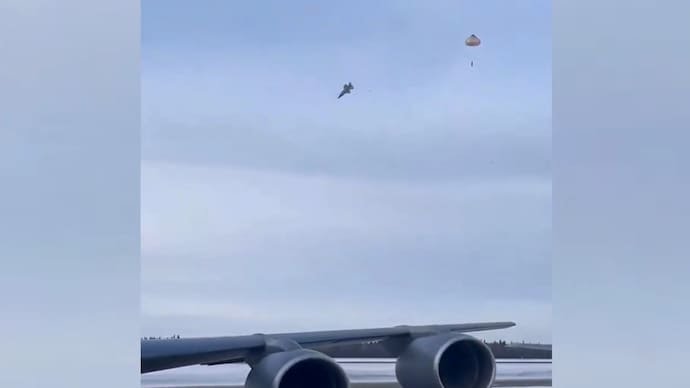A US Air Force F-35 pilot spent nearly an hour on a conference call with engineers trying to troubleshoot a problem with his $200 million jet before it spiralled onto the runway at an Alaska airbase and exploded in a fireball, according to an investigation report released this week.
The crash happened on January 28 when the fifth-generation stealth fighter went down during a training flight at the Eielson Air Force Base. Video of the accident showed the aircraft tumbling toward the ground before erupting in flames, footage that quickly spread on social media and sparked amazement and wild theories.
According to CNN, the pilot ejected safely just moments before impact and suffered only minor, non-life-threatening injuries. The jet, however, was destroyed.
In its report, the Air Force Aircraft Accident Investigation Board said that ice in the hydraulic systems of the jet’s nose and main landing gears prevented them from functioning properly, ultimately causing the crash.
Shortly after take-off, the pilot discovered the landing gear would not retract fully. Attempts to lower it again left the nose wheel locked at an angle.
That malfunction tricked the F-35’s sensors into believing it was already on the ground, switching its computer into “automated ground-operation mode” while still airborne, investigators said. This made the aircraft “uncontrollable”.
Inspectors later found that about one-third of the hydraulic fluid in the nose and right main gears was water. It turned out that the jet was refuelled from a hydraulic fluid barrel that contained a large amount of water.
At the time of the crash, temperatures hovered around -18 degrees Celsius. Consequently, the water in the hydraulics, which shouldn’t have been there in the first place, froze after takeoff and jammed the landing gear, reported Business Insider.
As he circled the air base, the pilot reviewed checklists and then joined a conference call with five Lockheed Martin engineers, including specialists in software, safety, and landing gear.
The specialists advised two touch-and-go manoeuvres in an effort to straighten the nose wheel. Instead, the attempts jammed both main landing gears, making a safe landing impossible.
The report noted Lockheed Martin had previously warned about potential cold-weather issues in a 2024 maintenance bulletin, saying they could make it “difficult for the pilot to maintain control of the aircraft.”
Investigators said had the engineers referenced that bulletin during the call, “they likely would have advised a planned full stop landing or a controlled ejection instead of a second touch-and-go”.






